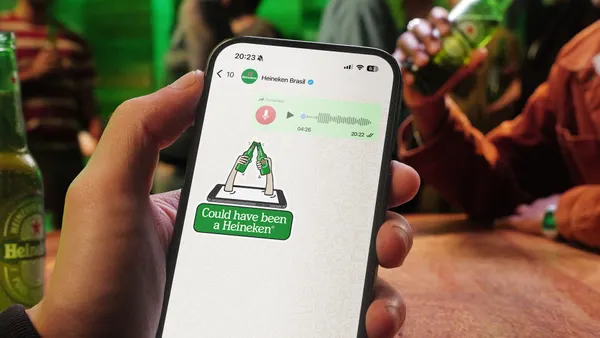Brief:
- Mobile data usage surged 82% in 2018 from a year earlier as Americans expanded their usage of connected Internet of Things (IoT) devices. Consumers used a record 28.58 trillion megabytes of mobile data last year, and increased talking and texting by roughly 10% and 15%, respectively, from 2017, according to an annual survey from the CTIA shared with Mobile Marketer.
- Americans connected 421.7 million mobile devices to wireless networks last year, up by 21.5 million from 2017. Most of those devices (284.7 million) were smartphones, while the biggest growth was in smartwatches, IoT devices and connected cars. Usage of those data-only devices grew more than 10% to 139.4 million.
- 5G deployment expanded last year as the industry reported 349,344 cell sites in operation, an increase of more than 25,000 sites from 2017. The increase was the biggest since 2010-11, when wireless carriers providers began deploying 4G.
Insight:
The CTIA report doesn't mention video and audio downloads as a possible source for greater data usage, but other research indicates that consumers are more reliant on mobile devices for streaming content. U.S. adults this year will spend more time using their mobile devices than they'll spend watching TV, eMarketer estimated this month. The researcher forecast that the average time spent on mobile devices will grow 3.7% this year to 3 hours and 43 minutes a day. That figure is supported by the massive increase in mobile data that CTIA reported.
The report also supports a body of research showing that smartphone growth has been eclipsed by faster rates of growth for newer gadgets like smartwatches, connected cars and IoT devices. The global market for wearable technology like smartwatches and wireless headphones that connect to virtual assistants is forecast to grow 15% this year, per researcher IDC. The growth suggests that mobile marketers must adapt for opportunities that these gadgets and voice assistants provide.
The annual survey also shows that the arrival of next-generation 5G service will change the mobile landscape for marketers, customers and providers. Marketers will be able to take advantage of the faster networks, which will better support video streaming, AR/VR and other advanced technologies. Meanwhile, 5G could compel more mobile customers to upgrade their smartphones as the advanced network requires the newest devices. Handset makers like Google, Nokia, Huawei, LG and Motorola also have 5G phones in various stages of development, while Apple is forecast to release a 5G iPhone next year.
5G deployment has grown steadily as carriers invest in the next generation of wireless service. Verizon in October launched the United States' first commercial 5G service in Houston, Indianapolis, Los Angeles and Sacramento. AT&T last year announced that it would begin testing 5G service in Atlanta, Dallas, Indianapolis, Oklahoma City, Charlotte and Raleigh, North Carolina, and Waco, Texas. Sprint started making 5G service available in May, just as T-Mobile last month started rolling out 5G service in New York.












